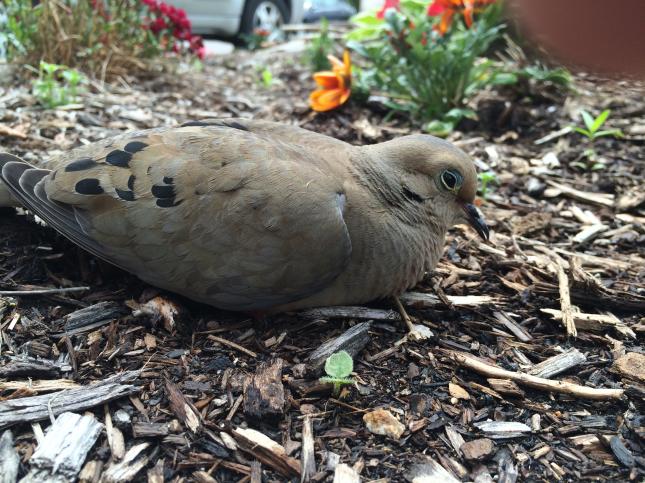
Fun Facts About Mourning Doves
- A graceful, slender-tailed, small-headed dove that’s common across the continent. Mourning Doves perch on telephone wires and forage for seeds on the ground; their flight is fast and bullet straight. Their soft, drawn-out calls sound like laments. When taking off, their wings make a sharp whistling or whinnying. Mourning Doves are the most frequently hunted species in North America.
- During the breeding season, you might see three Mourning Doves flying in tight formation, one after another. This is a form of social display. Typically the bird in the lead is the male of a mated pair. The second bird is an unmated male chasing his rival from the area where he hopes to nest. The third is the female of the mated pair, which seems to go along for the ride
- Mourning Doves tend to feed busily on the ground, swallowing seeds and storing them in an enlargement of the esophagus called the crop. Once they’ve filled it (the record is 17,200 bluegrass seeds in a single crop!), they can fly to a safe perch to digest the meal.
- Seeds make up 99 percent of a Mourning Dove’s diet, including cultivated grains and even peanuts, as well as wild grasses, weeds, herbs, and occasionally berries. They sometimes eat snails. Mourning Doves eat roughly 12 to 20 percent of their body weight per day, or 71 calories on average.
- Typically nests amid dense foliage on the branch of an evergreen, orchard tree, mesquite, cottonwood, or vine. Also quite commonly nests on the ground, particularly in the West. Unbothered by nesting around humans, Mourning Doves may even nest on gutters, eaves, or abandoned equipment. A flimsy assembly of pine needles, twigs, and grass stems, unlined and with little insulation for the young. Over 2 to 4 days, the male carries twigs to the female, passing them to her while standing on her back; the female weaves them into a nest about 8 inches across. Mourning Doves sometimes reuse their own or other species’ nests.
- Males have favorite “cooing perches” they defend from other males. Members of a pair preen each other with gentle nibbles around the neck as a pair-bonding ritual. Eventually, the pair will progress to grasping beaks and bobbing their heads up and down in unison.
- The oldest known Mourning Dove was a male, and at least 30 years, 4 months old when he was shot in Florida in 1998. He had been banded in Georgia in 1968.
.

